Join Our List
 |
|
Energy Star
Celebrates
20 Years of
Partnership, Promise,
and Progress!
Learn More

|
|
Did You Miss the Spring Issue of FNP's GREEN Magazine?
| 
| |
|
| |  | |
Washington Gas
Energy Services'
program gives residential utility customers in Frederick County the option to choose electricity generated at regional wind farms for their homes. Click here for more information and to check the current rates for 1 and 2 year contracts with options for 50 - 100% of your electricity coming from wind power.
|
|
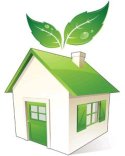
RESOURCES for
ENERGY EFFICIENCY
IMPROVEMENTS
at HOME
| |
|
|

 EVENTS, TRAININGS & CONNECTIONS EVENTS, TRAININGS & CONNECTIONS
Habitat ReStore of Frederick
Denim Drive 2012
March 21 - April 21
Black T-Shirt Affair:
Kid's Earth Month Art Show
Saturday, April 7
(art displayed through April 30)
1:00 p.m. - 3:00 p.m.
Green Homes Challenge
Powerware Party
Wednesday, April 11
5:30 p.m. - 7:00 p.m.
Rivermist Park
Stream Clean-Up
Saturday, April 14
9:00 a.m. - 12:00 p.m.
Mountainside Earth Day Community Festival
Saturday, April 14
10:00 a.m. - 3:00 p.m.
Project Clean Stream Clean-up
Catoctin Creek Nature Center and Park
Saturday, April 14
11:00 a.m. - 2:00 p.m.
Cherry Blossom Tree Tour Celebration
Sunday, April 15
12:00 p.m. - 2:00 p.m.
Money Saving Incentives for Businesses:
Energy Mini Conference
Wednesday, April 18
8:30 a.m. - 10:30 a.m.
Frederick County
Sustainability Commission Meeting
Wednesday, April 18
3:00 p.m. - 5:00 p.m.
Frederick Green Drinks
Wednesday, April 18
5:00 p.m. - 7:00 p.m.
Nature Fest
Saturday, April 21
10:00 a.m. - 2:00 p.m.
Farm Stream Buffer Planting
Saturday, April 21
10:00 a.m. - 2:00 p.m.
Earth Friendly Demo Day
Common Market
Co-op
Saturday, April 21
10:00 a.m. - 2:00 p.m.
Audubon Society of Central Maryland 2012 Native Plant Sale
Saturday, April 28
9:00 a.m. - 2:00 p.m.
Frederick County Master Gardeners Annual Plant Sale
Saturday, April 28
8:00 a.m. - 12:00 p.m.
Second Annual Earth Day Crop Mob
Common Market Coop
Saturday, April 28
10:00 a.m. - 1:00 p.m.
WasteNOT!
Brunswick Eco-Palooza
Saturday, April 28
10:00 a.m. - 4:00 p.m.
Home Composting Class
Saturday, April 28
2:00 p.m. - 4:00 p.m.
- or -
Monday, April 30
2:00 p.m. - 4:00 p.m.
Saturday, April 28
9:00 a.m. - 11 a.m.
Forestry Board Lecture Series
"Healthy Trees, Happy Homeowner"
Thursday, May 3
6:45 p.m. - 7:45 p.m.
Catoctin Forest Alliance Conference:
Connecting Children with Nature
Friday, May 4
8:00 a.m. - 4:30 p.m.
Home Composting Class
Friday, May 4
6:00 p.m. - 8:00 p.m.
Green Homes Challenge
Powerware Party
Tuesday, May 8
12:00 p.m. - 1:00 p.m.
Home Composting Class
Thursday, May 10
9:30 a.m. - 11:30 a.m.
Neighborhood Green Workshop
Saturday, May 12
8:30 a.m. - 3:30 p.m.
Frederick County
Sustainability Commission Meeting
Wednesday, May 16
3:00 p.m. - 5:00 p.m.
Frederick Green Drinks
Wednesday, May 16
5:00 p.m. - 7:00 p.m.
Home Composting Class
Friday, May 18
11:00 a.m. - 1:00 p.m.
Bike to Work Day
Friday, May 18
Residential Household Hazardous Waste Drop Off Event
Saturday, May 19
8:00 a.m. - 12:00 p.m.
Middletown May Festival
Saturday, May 19
10:00 a.m. - 5:00 p.m.
Home Composting Class
Saturday, May 26
2:00 p.m. - 4:00 p.m.
Green Leader Rain Garden Workshop
Saturday, June 16
9:30 a.m. - 12:30 p.m.
Green Building Institute
| |
|
|

|
|
Greetings!

My husband and I are buying a house this week. It needs a little sprucing up, so we are refinishing the floors, removing wallpaper from the walls, and touching up old paint. There's a ton of work to be done, but I don't mind. I am really looking forward to being in our new place. That's how I feel about spring. There's a ton of activities, but I am so happy to be out of hibernation; I want to do everything. So in that spirit, here are some spring opportunities for sustainability.
- Take a class to learn how to compost, or a workshop on how to build a rain garden! Check our calendar of events to see all of the learning opportunities available this spring.
- Check out the local Farmer's Markets! To find a market, visit www.frederickfarmfresh.com. Many of these markets start in May.
- Attend a native plant sale with the Audubon Naturalist's Society or the Master Gardeners - they are at the same time on April 28! I have found the most beautiful and interesting plants at these sales at great prices, but you have to show up early.
- Participate in a cleanup. Check out the events at Rivermist Park, Downtown Frederick, and the Catoctin Nature Center and Park.
- Attend a cultural event. I am very excited about the Cherry Blossom Festival we are having at Baker Park on April 15, where we will be hosting an award-winning youth drumming group from Fukushima Japan. Their town was destroyed by the tsunami and they will never be able to return due to the nuclear accident. Their experience has a lot to teach about sustainability and resilience.
- Make your business more sustainable! Check out the event on April 18 that we are sponsoring with the Business Development and Retention Division. Businesses will learn how they can pay less for electricity with co-ops, get rebates from Potomac Edison for energy efficiency, select verified contractors for green projects, and install low- or no-cost solar photo-voltaic systems.
- Help advance sustainability in Frederick County! Apply to be a volunteer member of the Frederick County Sustainability Commission. Click here for application instructions.
Enjoy this beautiful and busy spring; I hope to see you at these and other events!
Shannon Moore
|
 STAFF UPDATE: Darlene Bucciero Joins the OSER Team STAFF UPDATE: Darlene Bucciero Joins the OSER Team | |
In early March, Darlene Bucciero joined the OSER staff. Darlene has worked with Frederick County for more than four years and comes from the Department of Public Works (DPW). As a Project Manager IV, she managed and planned public works capital building and watershed projects. In addition to several County facility renovations, Darlene has managed two stream restoration projects while working for DPW. She will work with OSER's Watershed Management team in implementing the National Pollutant Discharge Elimination System (NPDES) Program as our new permit is finalized. She will also begin to develop green building initiatives with the Sustainability team.
|
 OSER OPPORTUNITY: Chesapeake Conservation Corps Position OSER OPPORTUNITY: Chesapeake Conservation Corps Position | |
In partnership with the Chesapeake Bay Trust, OSER is seeking a stipend volunteer to join the Chesapeake Conservation Corps (CCC). The CCC volunteer will spend one year working on Frederick County's Green Homes Challenge and will also participate in other activities with the full Corps. The Green Homes Challenge helps households reduce energy use, adopt environmentally friendly practices, and use renewable energy. The CCC volunteer will focus on community education and engagement and will also have the opportunity to engage in other watershed enhancement projects.
The CCC volunteer will receive a stipend of $15,500 and health insurance. The purpose of the CCC is 1) to enable stipend volunteers to work with host organizations and communities throughout Maryland to implement on-the-ground restoration and energy conservation projects, and 2) to provide leadership and training opportunities for young adults pursuing environmental and conservation careers.
Interested applicants should apply directly through the Chesapeake Bay Trust by following instructions at www.cbtrust.org/chesapeakeconservationcorps; however, they are also encouraged to contact OSER Sustainability Program Coordinator, Lisa Orr, at 301.600.6864 or lorr@frederickcountymd.gov to learn more about this specific CCC position. The application deadline is May 14, 2012, with the one-year service term to begin in late August, 2012.
|
|
 MONOCACY & CATOCTIN WATERSHED ALLIANCE: MONOCACY & CATOCTIN WATERSHED ALLIANCE:
NEIGHBORHOOD GREEN WORKSHOP: May 12, 2012
Technical Assistance & Resources for a Low-Maintenance, Environmentally-Friendly Yard
|
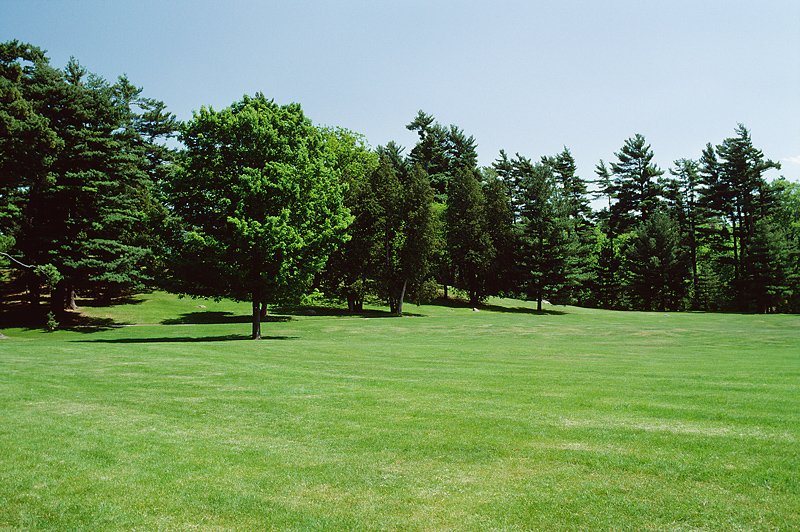 Would you like to learn how to design a sustainable and environmentally friendly landscape for your property and acquire the tools and resources necessary to make your vision a reality? If so, you are invited to participate in the Monocacy & Catoctin Watershed Alliance's upcoming Neighborhood Green Workshop from 8:30 a.m. to 3:30 p.m., Saturday, May 12, at Linganore High School located at 12013 Old Annapolis Rd., Frederick, MD. Would you like to learn how to design a sustainable and environmentally friendly landscape for your property and acquire the tools and resources necessary to make your vision a reality? If so, you are invited to participate in the Monocacy & Catoctin Watershed Alliance's upcoming Neighborhood Green Workshop from 8:30 a.m. to 3:30 p.m., Saturday, May 12, at Linganore High School located at 12013 Old Annapolis Rd., Frederick, MD.
The Neighborhood Green Training Workshop will cover relevant conservation, wildlife enhancement, forestry and tree care practices. Workshop participants will also receive help with developing their own individual plan for their property. Once this plan is prepared, a natural resource expert may be available to meet with each participant on their property to review this plan. In addition, the property covered in the plan may be eligible for cost-share assistance to pay for a substantial amount of the implementation of this practice.
Workshop participants will also receive the full-color 139-page "The Woods in Your Backyard" manual (a $20 value), lunch, additional reference materials, and a free soil test kit & analysis. Register by May 4, 2012 and only pay $20 per person or $35 per couple. Registration will be allowed after May 4th and at the door for $30 per person/$45 per couple. (Couples will receive one set of materials.)
Landowners of just a few acres can make a positive difference in their environment through planning and implementing simple stewardship practices. Small lots are important, since the vast majority of landowners have less than 10 acres; this land, wooded or not, is a vital resource for all of us.
By enhancing or creating natural areas and woodland on these properties, landowners can enjoy recreation, aesthetics, wildlife, and water quality. If a landowner's lot connects with other lots, there is ample opportunity to make an even larger impact by getting neighbors involved.
We look forward to you participating in our Neighborhood Green program!
Click the links below for
Unable to make the workshop but still interested in reforesting/planting trees on a portion of your property? Please contact Heather Montgomery: 30.-600.1741; HMontgomery@frederickcountymd.gov.
Back to Top
|
 TRAINING: Green Leader Rain Garden Workshop; June 16 TRAINING: Green Leader Rain Garden Workshop; June 16 | |
 Thanks to OSER's Chesapeake Conservation Corps Volunteer, Nicole Robinson, Frederick County residents can learn about the benefits of rain gardens and how to install them at a hands-on Rain Garden Workshop on Saturday, June 16. The workshop and installation will be held at Round Meadow in Catoctin Mountain Park, from 9:30 a.m. to 12:30 p.m. The rain garden will help filter stormwater that flows off the nearby dining hall roof, lawn, and parking lot before it enters a storm drain leading to Owens Creek, a branch of the Monocacy River. Thanks to OSER's Chesapeake Conservation Corps Volunteer, Nicole Robinson, Frederick County residents can learn about the benefits of rain gardens and how to install them at a hands-on Rain Garden Workshop on Saturday, June 16. The workshop and installation will be held at Round Meadow in Catoctin Mountain Park, from 9:30 a.m. to 12:30 p.m. The rain garden will help filter stormwater that flows off the nearby dining hall roof, lawn, and parking lot before it enters a storm drain leading to Owens Creek, a branch of the Monocacy River.
Workshop attendees will learn how to design and install a rain garden on their own properties. They will also have the opportunity to engage in other sustainable behaviors by joining the Green Leader Challenge, a component of Frederick County's Green Homes Challenge. This program educates residents about energy efficiency, green living, and renewable energy, and helps them take action to reduce the environmental impact of their households.
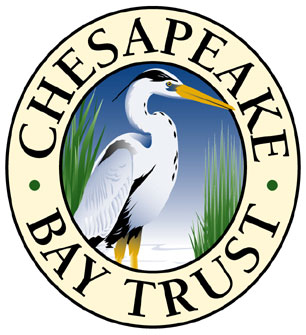 The workshop will be led by Nicole and several experts in rain garden design. The Chesapeake Bay Trust is providing project funding.Project partners include Catoctin Mountain Park, the Natural Resources Conservation Service (NRCS), the Interstate Commission for the Potomac River Basin (ICPRB), the Catoctin Forest Alliance (CFA), the Monocacy & Catoctin Watershed Alliance (MCWA), and Frederick County Master Gardeners. The workshop will be led by Nicole and several experts in rain garden design. The Chesapeake Bay Trust is providing project funding.Project partners include Catoctin Mountain Park, the Natural Resources Conservation Service (NRCS), the Interstate Commission for the Potomac River Basin (ICPRB), the Catoctin Forest Alliance (CFA), the Monocacy & Catoctin Watershed Alliance (MCWA), and Frederick County Master Gardeners.
For more information or to reserve a spot at the workshop, contact Nicole Robinson at NRobinson@FrederickCountyMD.gov or 301.600.1306.
Back to Top
|
|
 GREEN HOMES CHALLENGE: GREEN HOMES CHALLENGE:
Congratulations Certified Power Savers!
|
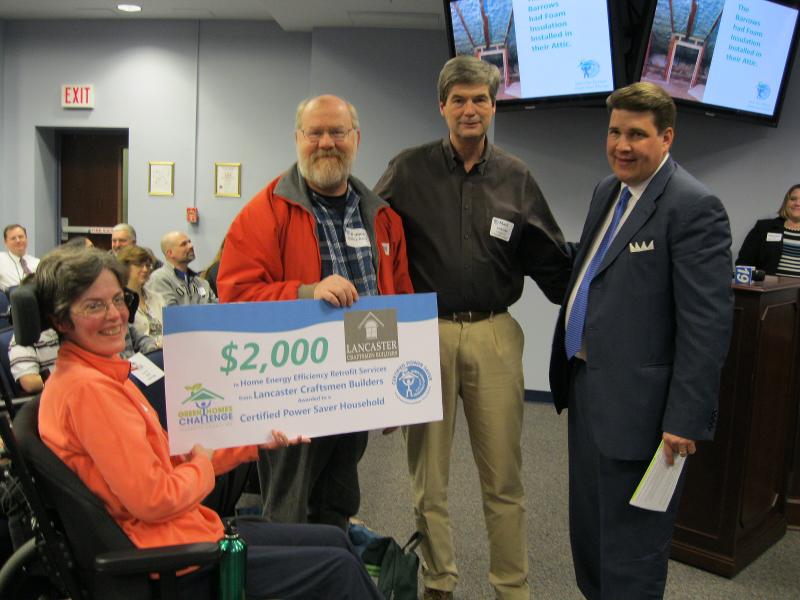 Frederick County's Green Homes Challenge (GHC) is proud to recognize our first 50 Certified Power Saver Households! In addition to receiving awards from the Frederick County Board of County Commissioners (BoCC) before the Public Hearing on February 21, many of the households received great prizes from a special drawing. Frederick County's Green Homes Challenge (GHC) is proud to recognize our first 50 Certified Power Saver Households! In addition to receiving awards from the Frederick County Board of County Commissioners (BoCC) before the Public Hearing on February 21, many of the households received great prizes from a special drawing.
The Duffey-Nairn Household of Frederick won $2,000 in energy efficiency retrofit services donated by Lancaster Craftsman Builders. The Tartaglia Household of Myersville won a hotel stay donated by Plamondon Hospitality Partners for the new LEED certified TownePlace Suites Frederick opening soon on Westview Drive. While awarding the hotel stay certificate, BoCC President Blaine Young added limousine service to the prize. Sixteen additional prizes were awarded during a reception following the recognition ceremony; donors included Home Energy Team, MOM's Organic Market, Frederick Air, Inc., the Scott Key Center, The Home Depot, Frederick County Department of Solid Waste Management, Frederick County Division of Parks and Recreation, and Go Green Products.
Our Certified Power Savers changed behaviors and completed energy efficiency projects to conserve electricity and fuel at home. Combined, their efforts have resulted in estimated annual savings of over $27,255 and 383,879 kWh of electricity. This saved energy is enough to power 20 homes for a year!
Back to Top
|
 GREEN BUSINESS: Frederick Farm Fresh GREEN BUSINESS: Frederick Farm Fresh |
 It's spring and that means the time for bountiful local and farm-fresh food is just around the corner. From fruits and vegetables to meats, cheeses, honey, wool, plants, and more, Frederick County farmer's markets have many seasonal foods and products for your household. It's spring and that means the time for bountiful local and farm-fresh food is just around the corner. From fruits and vegetables to meats, cheeses, honey, wool, plants, and more, Frederick County farmer's markets have many seasonal foods and products for your household.
Frederick Farm Fresh is a website dedicated to the farmer's markets of Frederick County. The site includes times and locations of markets, photos from market events, a list of market vendors, and more. The West Frederick Farmer's Market located at 110 Baughman's Lane was voted the third favorite farmer's market in Maryland and 15th favorite in the nation in 2011. It operates on Saturdays from 10:00 a.m. to 1:00 p.m., May through November. Other County market locations include downtown Frederick, Brunswick, Emmitsburg, the Great Frederick Fair fairgrounds, Middletown, Thurmont, Urbana, and more.
The Frederick County Virtual Farmers Market is another great online resource that lists Frederick County farmers who provide specific products and Community Supported Agriculture (CSA) shares. Early spring is the perfect time to search for a CSA to join. By joining a CSA, you reserve a share of the farm's produce for an entire growing season at a reduced upfront cost.
Another great year-round option for local and organic foods is a home delivery service. South Mountain Veggies offers delivery of fruits, vegetables, and baked goods, while South Mountain Creamery offers delivery of dairy products, meats, eggs, and more.
Supporting farmers boosts the local economy and provides your household with fresh foods that are good for your health and the environment. Don't miss out this season; be sure to take advantage of these local businesses!
|
 WATERSHED NEWS: The Nitty Gritty on Illicit Discharges WATERSHED NEWS: The Nitty Gritty on Illicit Discharges | 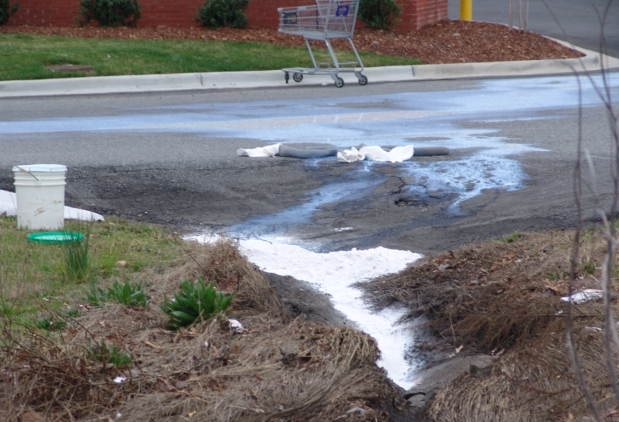 You may not be able to see a stream from your house or even in your neighborhood. But with over 1,400 miles of stream in the County, you can be sure that one isn't too far away. The water in those streams provides many resources to Frederick County. Residents use it for drinking water and recreational opportunities like fishing, swimming, and kayaking/canoeing, just to name a few. The streams also provide habitat and food for local wildlife. Therefore, it is very important to protect the quality of water entering the streams. You may not be able to see a stream from your house or even in your neighborhood. But with over 1,400 miles of stream in the County, you can be sure that one isn't too far away. The water in those streams provides many resources to Frederick County. Residents use it for drinking water and recreational opportunities like fishing, swimming, and kayaking/canoeing, just to name a few. The streams also provide habitat and food for local wildlife. Therefore, it is very important to protect the quality of water entering the streams.
One of the ways that Frederick County's Office of Sustainability and Environmental Resources (OSER) protects our local water quality is by identifying and eliminating illicit discharges. Frederick County residents can help OSER with this important function.
What is an illicit discharge and why is it bad? An illicit discharge is the introduction of any substance that is not entirely stormwater into the storm drain system. The storm drain system is different from the sanitary sewer system. The sanitary sewer system carries waste from houses, restaurants, and other developed areas in pipes to a wastewater treatment plant where it is treated to remove pollutants and contaminants. The storm drain system connects directly to the nearest stream or waterbody and carries water from roads, parking lots, driveways, and other surfaces. Because the storm drain system connects directly to a stream, the discharged water is often untreated and the pollutants or contaminants can degrade local water quality. Examples of illicit discharges include motor oil dumped into a storm drain; sanitary wastewater from a pipe that was connected to the storm drain system instead of the sanitary sewer system; septic tank effluent from failing septic systems; car wash wastewater; laundry wastewater; leaves and yard waste; and chlorinated pool water to name a few.
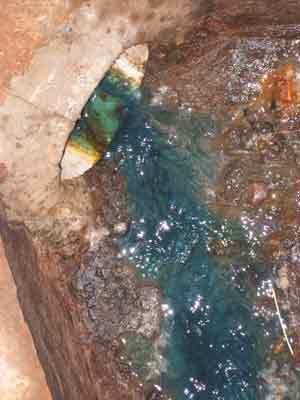 How can you tell normal stormwater flow from an illicit discharge? Flow during dry weather is the best indicator of illicit discharge. If there is flow from a pipe and it has not rained in three or more days, it is quite possible it is a result of an illicit discharge. Other indications that the discharge might be illicit is if the water has an odor, color, is cloudy or full of sediment, or has anything floating in it. How can you tell normal stormwater flow from an illicit discharge? Flow during dry weather is the best indicator of illicit discharge. If there is flow from a pipe and it has not rained in three or more days, it is quite possible it is a result of an illicit discharge. Other indications that the discharge might be illicit is if the water has an odor, color, is cloudy or full of sediment, or has anything floating in it.
What should you do if you think you've found an illicit discharge? Report it immediately. If you think the illicit discharge is the result of a hazardous spill, call 911 for an emergency response. If the illicit discharge is not an emergency, you may report it to the Office of Sustainability and Environmental Resources (OSER) at 301.600.1350 or jseipp@frederickcountymd.gov. We'll need as much information from you as possible in order to locate and eliminate the illicit discharge. When reporting an illicit discharge, the following information is helpful: date and time of incident, location, source and type of pollutant (if known), responsible party (if known), and your contact information (in case we need to follow up with you to get more information).
COMING SOON - OSER is developing an online citizen's reporting tool that will be available on the Frederick County Government website.Check back soon for updates!
Back to Top
|
| YOUR LAWN: How Green is that Grass? | |
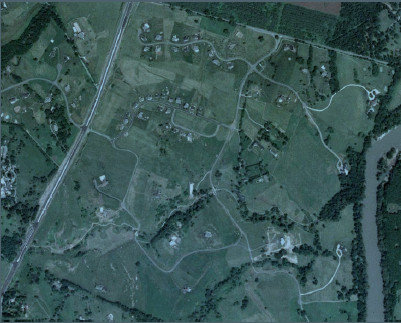
Does the smell of a newly mown lawn conjure up fond memories of spring fever, backyard games and barbeques? Let's take a closer look at the facts behind lawn maintenance -- a regular chore that takes 58 million Americans about 1.8 billion hours each year to complete! (Source)
In the Chesapeake Bay watershed, turf grass now covers more than 3.8 million acres, a staggering 9.5% of the watershed's total land area. That's more than the watershed's pasture cover (7.7%) or row crops acreage (9.2%). In Frederick County, nearly 23% of our total land area is covered in grass.
What's wrong with that? Nitrogen fertilization, pesticide application, water use, runoff from compacted soils, energy use, volatile organic compound (VOC) emissions, biomass production (grass clippings), maintenance costs and labor - phew! - they're all factors that affect not only our local waterways and the Chesapeake Bay, but also our national energy supply, the air we breathe, the water we drink, and our households' budget and free time.
Based on the percentage of Frederick County turf grass in the Chesapeake Bay Watershed, we can estimate that County residents and businesses spend nearly $12 million each year to maintain lawns. They apply over 45,000 pounds of pesticides and nearly 516,000 pounds of fertilizer each year, and then use nearly 137,000 gallons of gas to cut grass, generating more than 18 tons of clippings. The annual volume of run-off from Frederick County lawns (roughly 3 cubic feet per second/day/yr) is equivalent to approximately 1,100 Olympic size swimming pools! This run-off includes a lot of pesticides and fertilizers that end up in our local waterways and the Chesapeake Bay. (CSN Technical Bulletin No. 8; Global Water Conversion Factors)
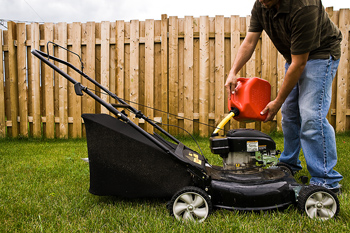 Then there is the impact of lawn equipment. According to EPA 2010 NONROAD Modeling, American households and lawn maintenance companies use nearly two billion (yes, billion!) gallons of gas each year in mowers, trimmers and edgers; they spill nearly 11 million gallons annually refueling. The impact of lawn equipment is greater than we might think. Before 1997, emissions from lawn equipment were unregulated. That means that far more air pollutants come from burning a gallon of gas in a mower than, say, a car whose emissions are regulated. Then there is the impact of lawn equipment. According to EPA 2010 NONROAD Modeling, American households and lawn maintenance companies use nearly two billion (yes, billion!) gallons of gas each year in mowers, trimmers and edgers; they spill nearly 11 million gallons annually refueling. The impact of lawn equipment is greater than we might think. Before 1997, emissions from lawn equipment were unregulated. That means that far more air pollutants come from burning a gallon of gas in a mower than, say, a car whose emissions are regulated.
Fortunately, the EPA began setting emissions standards for lawn equipment in 1997. Phase 1 emissions standards reduced hydrocarbon and oxides of nitrogen (NOX) emissions by 32%, and Phase 2 standards, implemented between 2001 and 2007, resulted in an another 60 - 70% reduction from Phase 1 levels. Even so, in 2008, EPA estimated that a new gas powered lawnmower produced as much VOCs and NOXs in one hour of operation as 11 new cars being driven for one hour. Starting in 2012, new lawn equipment must meet EPA Phase 3 standards which are approximately 35% cleaner than Phase 2. So the good news is that brand new mowers will more than 80% cleaner than their pre-1997 counterparts.
Still, based on 2010 EPA modeling, one of today's residential non-riding gas mowers produces around 88 lbs/yr of CO2 emissions and 34 lbs/year of other pollutants, such as carbon monoxide, sulfur dioxide, and NOXs. An individual riding mower produces approximately 664 lbs/yr of CO2, and 215 lbs/yr of other pollutants. Of course, the numbers for commercial equipment much higher because they are used more frequently.The high levels of carbon monoxide, VOCs, and NOXs emitted from garden equipment account for a significant portion of the nation's air pollution and a higher percentage in metropolitan areas. Because this equipment is mainly used during the summer months when ground level ozone (the main component of smog) is at its highest, this causes more problems for those who suffer from asthma and other respiratory conditions.
What can be done? Reducing the amount of turf grass on your property is one strategy. Attend this spring's Neighborhood Green Workshop or check out EPA's Greenscaping program, publications, and the GreenScape Tip Sheet.
Consider using a push-mower or electric mower. While electric mowers have emissions associated with the electricity that powers them, emissions from power plants are regulated better than those from lawn mowers. If you need a more powerful gas mower, buy the newest model you can and look for a label on the engine that says "Meets EPA Regs for 2012"; then be sure to keep it tuned up. Set the cutting level on the highest setting, avoid mowing during the hottest hours of the day, and mow less frequently. Want to be on the cutting edge? Just for fun, check out the Mow Cycle and other home-made bicycle lawnmowers.
|
 MYTHBUSTERS: MYTHBUSTERS:
MYTH - You Should Fertilize Your Lawn in the Spring | |
 For many Frederick County residents, spring is a time for planting, gardening, and fertilizing in preparation for the warm summer months. But, in Maryland's temperate climate, spring is actually the wrong time to fertilize your lawn. For many Frederick County residents, spring is a time for planting, gardening, and fertilizing in preparation for the warm summer months. But, in Maryland's temperate climate, spring is actually the wrong time to fertilize your lawn.
The most common varieties of grass used in Maryland are the cool season grasses, like fescue, bluegrass, and ryegrass. These grasses should be fertilized in the late summer or early fall to help them recover from summer stresses and store food for spring growth. Fertilizing your lawn in the fall helps the grass to develop a stronger and healthier root system that allows for drought resistance and stress recovery. Less common warm season grasses, like zoysia grass and Bermuda grass, can be fertilized in the early summer during their most active growth period.

While fall is the appropriate time to fertilize your lawn, the truth is that many lawns do not need to be fertilized at all. Over-fertilization can cause many problems for the health of the lawn and the environment, including increased need for mowing and dethatching, lower drought tolerance, increased insect damage, susceptibility to disease, burning of roots and foliage, and nutrient pollution of local waterways and the Chesapeake Bay.
Instead of fertilizing, you can supply your lawn with natural nutrients and high-quality soil by grass-cycling and composting. Leave grass trimmings, or even a light layer of mulched leaves, on your lawn rather than raking it off and bagging it. The grass trimmings and chopped leaves break down and return nutrients to the soil, reducing the need to fertilize your lawn. Spreading compost on your lawn, especially in areas being seeded, also helps to improve soil quality. If using a synthetic fertilizer, be sure to purchase a slow-release variety, as it causes less environmental harm.
How do you decide whether your lawn needs to be fertilized or not? Purchase an inexpensive soil test kit from a local gardening or home improvement store or request one from the University of Maryland Extension Office. Use the kit to send a small soil sample to a testing lab, which will notify you of whether your lawn needs fertilizer, what type of fertilizer is needed, and how much is needed.
For more information about proper lawn care and soil testing, visit:
Use Fertilizers Wisely MD Department of Agriculture Fact Sheet
University of Maryland Extension Fertilizing Facts for Home Lawns
Environmental Protection Agency's GreenScapes Program
Have you heard a myth or urban legend related to sustainability and the environment that you would like resolved? Send it to sustainability@frederickcountymd.gov and we'll get to the bottom of it!
|
|
| |
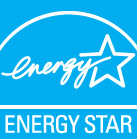 For Families: Fridge/Freezer Calculator For Families: Fridge/Freezer Calculator
Check out 15 fun animated PBS episodes with The Greens and learn about how to"go green" with friends, food, pets, clothes, energy and more. Games, blogs, tips, recipes and more accompany each episode. WGBH in Boston created Meet the Greens. Check out the Parents' Guide to The Greens for more information.
For Businesses: First Energy/Potomac Edison Lighting Incentives The First Energy Non-Standard Lighting for Business Incentive Program is intended for use with energy efficient lighting projects, both new construction and retrofits. This site provides all the information, resources, and assistance businesses need to take advantage of these substantial lighting incentives. The First Energy Non-Standard Lighting for Business Incentive Program is intended for use with energy efficient lighting projects, both new construction and retrofits. This site provides all the information, resources, and assistance businesses need to take advantage of these substantial lighting incentives.
|
|
|

The Frederick County Sustainability and Environmental Resources Office advances practical solutions for protecting the environment, conserving energy, and living sustainably in Frederick County.
|
|
|